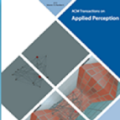Path optimization is a fundamental concern across various real-world scenarios, ranging from traffic congestion issues to efficient data routing over the internet. The Traffic Assignment Problem (TAP) is a classic continuous optimization problem in this field. This study considers the Integer Traffic Assignment Problem (ITAP), a discrete variant of TAP. ITAP involves determining optimal routes for commuters in a city represented by a graph, aiming to minimize congestion while adhering to integer flow constraints on paths. This restriction makes ITAP an NP-hard problem. While conventional TAP prioritizes repulsive interactions to minimize congestion, this work also explores the case of attractive interactions, related to minimizing the number of occupied edges. We present and evaluate multiple algorithms to address ITAP, including a message passing algorithm, a greedy approach, simulated annealing, and relaxation of ITAP to TAP. Inspired by studies of random ensembles in the large-size limit in statistical physics, comparisons between these algorithms are conducted on large sparse random regular graphs with a random set of origin-destination pairs. Our results indicate that while the simplest greedy algorithm performs competitively in the repulsive scenario, in the attractive case the message-passing-based algorithm and simulated annealing demonstrate superiority. We then investigate the relationship between TAP and ITAP in the repulsive case. We find that, as the number of paths increases, the solution of TAP converges toward that of ITAP, and we investigate the speed of this convergence. Depending on the number of paths, our analysis leads us to identify two scaling regimes: in one the average flow per edge is of order one, and in another the number of paths scales quadratically with the size of the graph, in which case the continuous relaxation solves the integer problem closely.
翻译:暂无翻译




